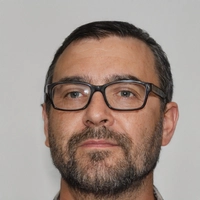Gout Risk Calculator
Allopurinol & Alcohol Risk Assessment
This tool helps you understand your risk of gout flare-ups and liver stress when combining allopurinol with alcohol based on your specific dosage and drinking habits.
Your Risk Assessment
Recommendations
Trying to figure out whether you can enjoy a glass of wine while taking allopurinol alcohol safety is a common dilemma for anyone managing gout. The short answer? It isn’t a clear‑cut yes or no. Your risk depends on dosage, drinking habits, liver health, and the presence of other meds. This guide breaks down the science, the potential pitfalls, and practical steps you can take to stay safe.
What Is Allopurinol?
Allopurinol is a xanthine oxidase inhibitor prescribed to lower uric acid levels in people with gout. By blocking the enzyme xanthine oxidase, it prevents the conversion of purines into uric acid, keeping blood levels below the 6 mg/dL threshold that typically triggers gout attacks. Most patients start with 100 mg daily, adjusting up to 300 mg based on serum uric acid tests.
Allopurinol has been on the market since the 1960s and is considered the cornerstone of long‑term gout management. Its effectiveness, however, comes with a handful of side effects-skin rash, hypersensitivity, and, importantly for this article, liver enzyme elevation.
How Alcohol Interacts With Allopurinol
Alcohol itself is a known gout trigger. It raises uric acid production, reduces renal excretion, and can dehydrate you-each factor nudging you closer to a flare. When you add a medication that already stresses the liver, the combo can be risky.
Here’s a quick breakdown of the main interaction points:
- Enzyme Competition: Both alcohol and allopurinol are metabolized by the liver's cytochrome P450 system. High alcohol intake can slow down allopurinol clearance, potentially raising its blood concentration.
- Uric Acid Surge: Alcohol, especially beer, contains purines that directly convert to uric acid. Even moderate drinking can temporarily spike levels by 0.5-1 mg/dL.
- Liver Stress: Chronic alcohol use can elevate ALT and AST enzymes, mirroring the liver‑related side effects some patients experience on allopurinol.
Because the liver handles both substances, the safest approach is to treat them as potentially additive stressors.
Risks of Drinking While on Allopurinol
Research from the 2023 International Journal of Rheumatology looked at 1,200 gout patients on allopurinol and found that those who consumed more than three drinks per week had a 22% higher chance of a severe flare compared to abstainers. The same study noted a 15% increase in liver enzyme abnormalities among heavy drinkers.
Key risks include:
- Gout Flare-Ups: Alcohol can undo the uric‑lowering effect of allopurinol, leading to painful joint attacks.
- Hypersensitivity Syndrome: Rare but life‑threatening, this reaction (skin rash, fever, hepatitis) is more likely when the liver is already overworked.
- Kidney Stones: Elevated uric acid can precipitate crystals in the kidneys, and dehydration from alcohol worsens this risk.
- Medication Adherence: Hangovers may lead to missed doses, undermining long‑term control.
If you’re a light drinker-say one glass of wine on the weekend-the risk is considerably lower, but it’s not zero.

Managing Gout Flare‑Ups Without Alcohol
When you decide to skip the cocktail, there are plenty of alternatives to keep your social life and health in balance.
- Hydration: Aim for 2-3 L of water daily. Proper hydration dilutes uric acid and helps the kidneys flush it out.
- Diet Tweaks: Reduce red meat, organ meats, and sugary drinks. Opt for low‑purine foods like cherries, berries, and dairy.
- Non‑Alcoholic Mocktails: Sparkling water with a splash of citrus or infused cucumber makes a festive, gout‑friendly drink.
- Regular Monitoring: Keep quarterly serum uric acid checks. If levels creep above 6 mg/dL, discuss dosage adjustment with your doctor.
These habits help maintain the uric‑lowering benefits of allopurinol while minimizing flare triggers.
Alternative Medications and When to Switch
Sometimes the interaction risk is high enough that doctors consider swapping allopurinol for another urate‑lowering drug. The most common alternative is Febuxostat, a newer xanthine oxidase inhibitor.
Below is a quick side‑by‑side look at the two options.
| Attribute | Allopurinol | Febuxostat |
|---|---|---|
| Typical Starting Dose | 100 mg daily | 40 mg daily |
| Maximum Dose | 300 mg daily | 80 mg daily |
| Kidney Adjustment Needed? | Yes, dose reduction when eGFR <30 mL/min | Usually not required |
| Alcohol Interaction | Potential liver stress, increased flare risk | Less impact on liver enzymes but still advisable to limit heavy drinking |
| Common Side Effects | Rash, GI upset, liver enzyme rise | Headache, liver enzyme rise, cardiovascular warning in high‑risk patients |
Switching is not a cure‑all; febuxostat comes with its own cardiovascular warnings, especially for patients with existing heart disease. Always discuss the trade‑offs with a rheumatologist.

Practical Checklist for Patients on Allopurinol
- Know your dose and take it at the same time each day.
- Keep a drinking log-track any alcohol, even occasional sips.
- Schedule routine blood tests: uric acid, ALT/AST, and renal function every 3-6 months.
- Stay hydrated: at least 8 cups of water daily, more if you sweat a lot.
- Eat low‑purine foods; prioritize cherries, low‑fat dairy, and plant‑based proteins.
- If you notice rash, fever, or yellowing skin, call your doctor immediately-these could signal a hypersensitivity reaction.
- Discuss any over‑the‑counter pain relievers (like NSAIDs) with your physician, as they can also affect kidney and liver health.
Following this list helps you reap the full benefits of allopurinol while keeping alcohol‑related worries to a minimum.
Frequently Asked Questions
Can I have a single beer while taking allopurinol?
Occasional light drinking (one 12‑oz beer) is generally low risk for most patients, but you should monitor how you feel and keep an eye on liver enzyme labs. If you have a history of flares after alcohol, it’s safer to skip.
Does allopurinol interact with wine differently than with beer?
Wine contains fewer purines than beer, but the alcohol content still raises uric acid. The main concern remains liver metabolism, so the risk level is similar across most alcoholic beverages.
What signs indicate a dangerous reaction between alcohol and allopurinol?
Look for rash, fever, facial swelling, dark urine, or persistent nausea. These symptoms may signal a hypersensitivity syndrome that requires immediate medical attention.
If I stop drinking, how long does it take for allopurinol to work fully?
Allopurinol reaches steady‑state blood levels in about 2-3 weeks. You’ll usually see a noticeable drop in uric acid within the first month, provided you stick to the prescribed dose and stay hydrated.
Are there any safe non‑alcoholic drinks that still feel festive?
Absolutely-sparkling water with a splash of fresh citrus, rosemary‑infused mocktails, or low‑sugar kombucha make great alternatives that keep the palate excited without the uric‑acid hit.







